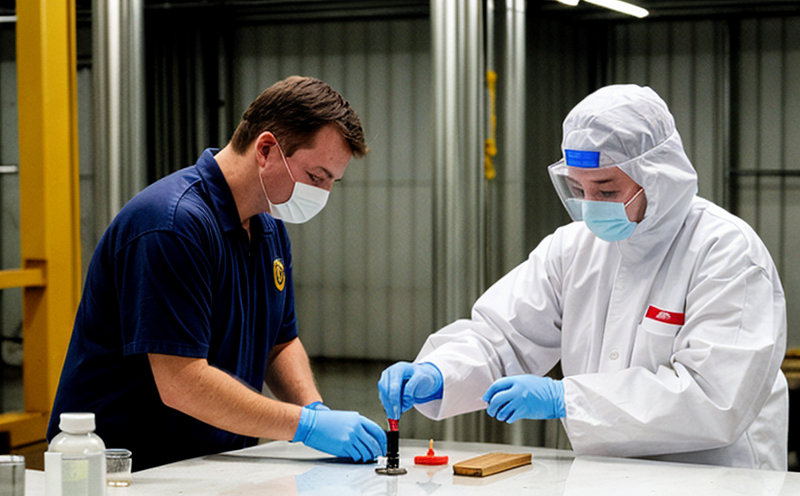ISO 22088-10 Extreme Temperature Testing
The ISO 22088 series of standards provides a comprehensive framework for evaluating the performance and safety of packaging materials under extreme environmental conditions. Specifically, ISO 22088-10 focuses on the evaluation of packaging systems subjected to extremely cold temperatures. This standard is crucial for ensuring that packaging materials perform reliably in environments where they are exposed to sub-zero temperatures, which can be encountered during manufacturing, storage, transport, and final use.
The extreme low temperature testing outlined in ISO 22088-10 assesses the ability of packaging materials to withstand cold conditions without compromising their integrity. This is particularly important for products that are sensitive to freezing or condensation, such as pharmaceuticals, chemicals, and electronics. The standard requires the packaging to maintain its structural integrity and barrier properties under these harsh conditions.
One key aspect of this testing involves subjecting the packaging samples to temperatures below -20°C (or even lower depending on specific requirements) for a defined period of time. This helps simulate real-world scenarios where products are exposed to extremely cold environments, such as during transportation through Arctic regions or storage in cold warehouses.
The testing procedure involves several steps:
- Sample Preparation: Packaging samples are prepared according to the specific requirements of ISO 22088-10. This includes ensuring that the sample size and shape are representative of the actual packaging being tested.
- Temperature Cycling: The samples undergo a series of temperature cycles, typically ranging from room temperature down to -40°C or lower, depending on the specific standards applied.
- Exposure Time: Samples are exposed to these temperatures for a predetermined duration. This allows for the assessment of how well the packaging holds up over time under extreme conditions.
- Evaluation Criteria: After exposure, the samples undergo evaluation based on several parameters, including structural integrity, barrier properties, and any signs of degradation such as cracking or delamination.
The primary goal of ISO 22088-10 is to ensure that packaging materials are robust enough to protect the contents during cold storage and transport. This standard plays a critical role in safeguarding products from damage due to freezing, condensation, or other environmental factors that can occur at very low temperatures.
For pharmaceutical companies, for instance, ensuring that their product packaging remains intact under extreme cold is not just a quality issue but also a regulatory requirement. Regulatory bodies like the FDA and EMA require manufacturers to demonstrate that their packaging meets international standards such as ISO 22088-10, especially for temperature-sensitive products.
The testing process is designed to be rigorous yet practical. It ensures that the packaging remains functional under challenging conditions while maintaining the integrity of the product inside. By adhering to this standard, manufacturers can confidently ensure that their packaging meets not only internal quality standards but also international regulatory requirements.
Why It Matters
The importance of extreme temperature testing cannot be overstated in industries where products are transported or stored under cold conditions. For example, the pharmaceutical sector relies heavily on effective packaging to ensure that medications remain stable and safe for consumption throughout their shelf life.
Inadequate packaging can lead to significant issues such as:
- Product Degradation: Exposure to cold temperatures can cause certain materials or chemicals to degrade, leading to reduced efficacy of the product.
- Loss of Integrity: Packaging that fails to maintain its structural integrity under extreme conditions may compromise the protection it provides to the contents.
- Regulatory Non-Compliance: Failure to meet industry standards like ISO 22088-10 can result in product recalls or legal action, causing reputational damage and financial losses.
The testing process outlined in ISO 22088-10 helps manufacturers identify potential weaknesses in their packaging design early on. By subjecting the packaging to real-world conditions during development, companies can make informed decisions about material selection, design modifications, or additional protective measures.
For quality managers and compliance officers, this standard provides a clear roadmap for ensuring that packaging meets both internal and external standards. It also helps in streamlining the supply chain process by identifying potential issues early in the product lifecycle.
Industry Applications
The application of ISO 22088-10 is particularly relevant across several industries, including pharmaceuticals, chemicals, electronics, and food products. Each industry has its unique challenges when it comes to packaging under cold conditions:
- Pharmaceuticals: Ensuring that drug formulations remain stable in cold storage is critical for maintaining efficacy.
- Chemicals: Some chemical compounds can react adversely to cold temperatures, necessitating robust packaging to prevent such reactions.
- Electronics: Electronic components are susceptible to damage from condensation and freezing, making this testing essential for ensuring product integrity.
- Foods: Perishable foods require packaging that can withstand cold conditions without compromising the freshness or safety of the contents.
In addition to these industries, ISO 22088-10 is also applicable in sectors such as automotive and aerospace, where products are frequently exposed to extreme environmental conditions. The robustness of the packaging plays a crucial role in protecting sensitive components and ensuring product safety.
The standard's emphasis on structural integrity and barrier properties ensures that it meets the specific needs of various industries while providing a consistent approach across different applications.
Use Cases and Application Examples
Let’s explore some real-world use cases where ISO 22088-10 is particularly relevant:
- Pharmaceutical Cold Chain: Ensuring that packaging used in the cold chain for transporting vaccines or other temperature-sensitive drugs meets ISO 22088-10 standards.
- Electronic Devices: Testing the packaging of electronic devices like smartphones and tablets to ensure they remain functional under sub-zero temperatures during transportation.
- Pesticide Containers: Evaluating the effectiveness of pesticide containers in preventing leaks or vapor loss, especially important for ensuring safety around cold storage facilities.
- Aerospace Components: Ensuring that components used in aerospace applications are protected from extreme cold conditions during manufacturing and transport.
In each of these cases, the testing process outlined in ISO 22088-10 provides a structured approach to evaluate packaging performance. By adhering to this standard, manufacturers can ensure that their products meet not only internal quality standards but also comply with international regulations.





